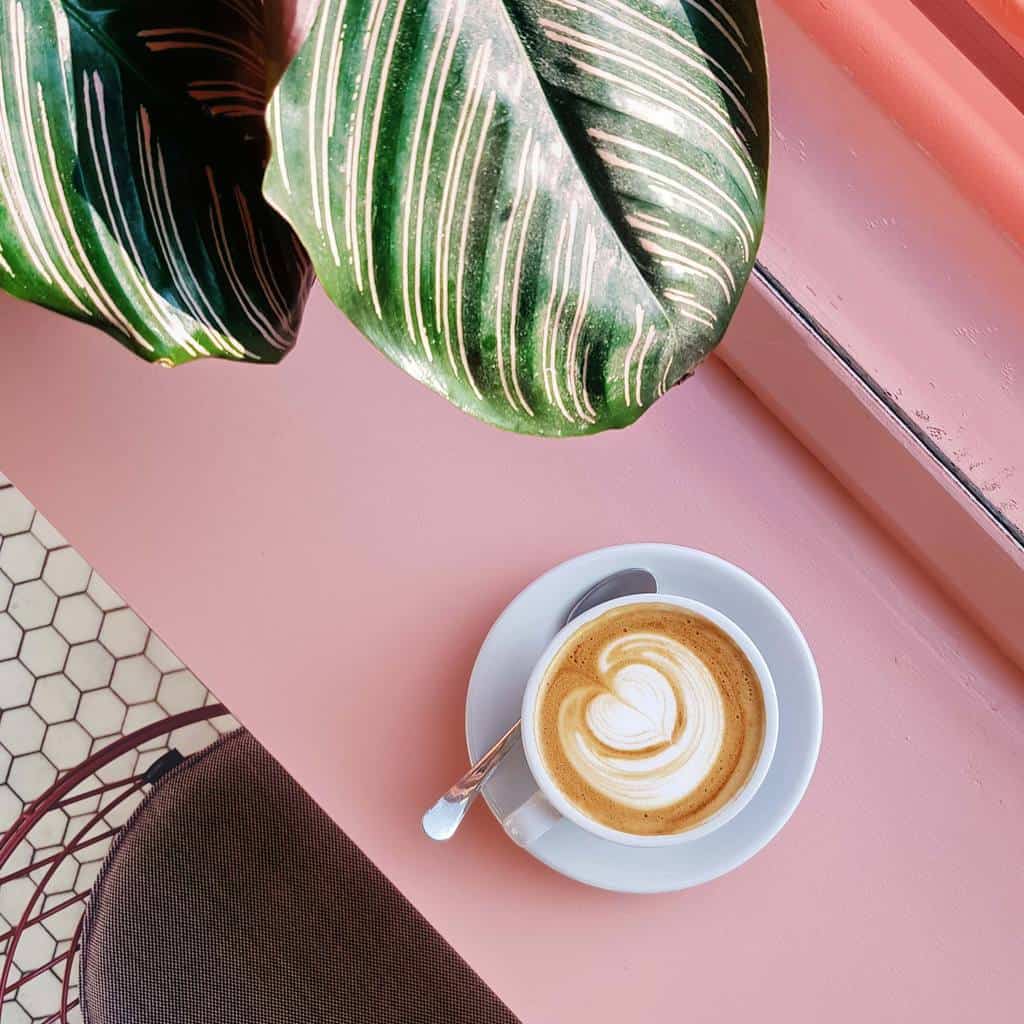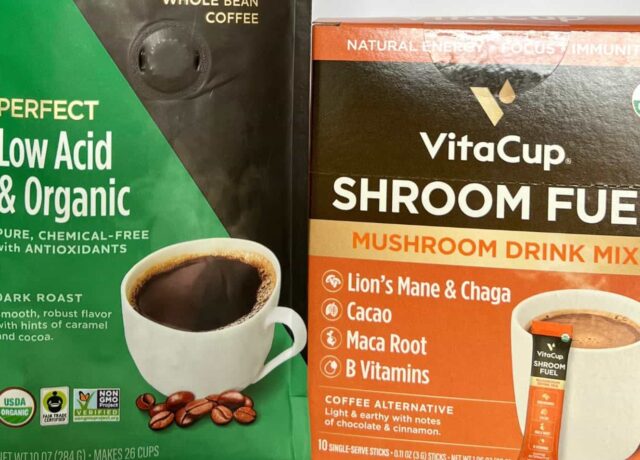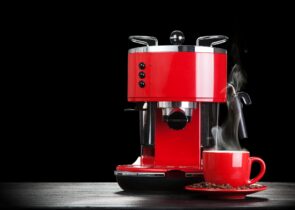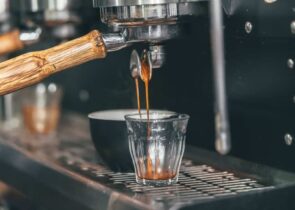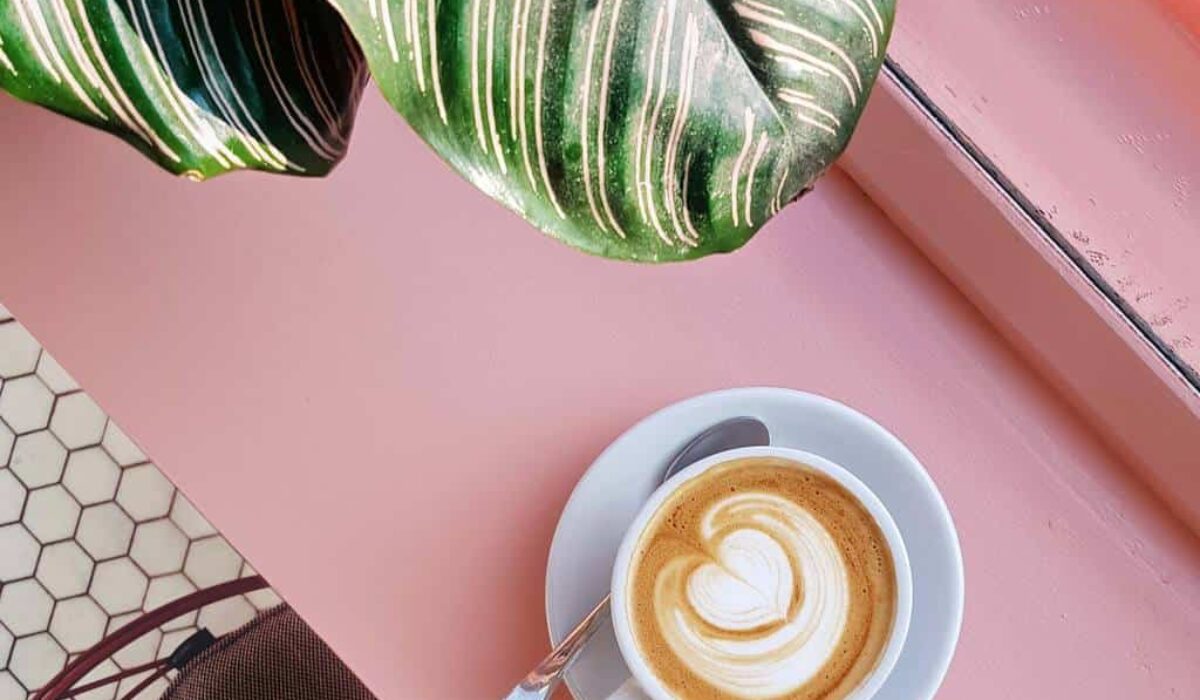When it comes to simplicity, nothing beats French press coffee. There’s no need for fancy hot water kettles and specialized filters to maximize your brew — all you really need are quality coffee grounds (preferably fresh), a good recipe, and your trusty press pot.
At a Glance: Our Top 5 Picks For French Press Coffee
Even newer recipes (like this grit-free, no-plunge technique I enjoy using) are almost just as simple to pull off as any, which speaks volumes about this brewer’s timeless and straightforward design.
Quick Summary: Best French Press Coffee Makers
![10 Best French Press Coffee Makers For [currentyear] 1 Bodum 51oz Chambord French Press Coffee Maker, High-Heat Borosilicate Glass, Polished Stainless...](https://m.media-amazon.com/images/I/318ZZmXeMDS._SL160_.jpg) | Our Top Choice Bodum Chambord French Press |
| Check on Amazon → |
![10 Best French Press Coffee Makers For [currentyear] 2 Cafe Du Chateau Stainless Steel French Press Coffee Maker - 34oz Insulated Coffee Press with 4-Level...](https://m.media-amazon.com/images/I/51SKxTO0VhL._SL160_.jpg) | The Original French Press by Cafe Du Chateau |
| Check on Amazon → |
![10 Best French Press Coffee Makers For [currentyear] 3 ESPRO - P7 French Press - Double Walled Stainless Steel Insulated Coffee and Tea Maker with...](https://m.media-amazon.com/images/I/416-JanoILL._SL160_.jpg) | ESPRO P7 Insulated French Press |
| Check on Amazon → |
![10 Best French Press Coffee Makers For [currentyear] 4 BAYKA 34 Ounce 1 Liter French Press Coffee Maker, Heat Resistant Thickened Borosilicate Glass...](https://m.media-amazon.com/images/I/51+23sbDNfL._SL160_.jpg) | BAYKA French Press Coffee Maker |
| Check on Amazon → |
![10 Best French Press Coffee Makers For [currentyear] 5 Secura French Press Coffee Maker, 304 Grade Stainless Steel Insulated Coffee Press with 2 Extra...](https://m.media-amazon.com/images/I/41dheMseCDL._SL160_.jpg) | Secura Insulated Coffee Press |
| Check on Amazon → |
![10 Best French Press Coffee Makers For [currentyear] 6 Bodum 51oz Brazil French Press Coffee Maker, High-Heat Borosilicate Glass, Black - Made in Portugal](https://m.media-amazon.com/images/I/41iGQKklDvL._SL160_.jpg) | Bodum Brazil French Press |
| Check on Amazon → |
![10 Best French Press Coffee Makers For [currentyear] 7 STANLEY Adventure All-In-One Boil + Brew French Press | 32 OZ](https://m.media-amazon.com/images/I/41m1IkJgP-L._SL160_.jpg) | Stanley Adventure All-in-One Boil + Brew French Press |
| Check on Amazon → |
![10 Best French Press Coffee Makers For [currentyear] 8 Frieling Double-Walled Stainless-Steel French Press Coffee Maker, Polished, 23 Ounces](https://m.media-amazon.com/images/I/41xDGO9bT5L._SL160_.jpg) | Frieling Double-Walled Stainless Steel French Press |
| Check on Amazon → |
![10 Best French Press Coffee Makers For [currentyear] 9 OXO BREW Venture Shatter-Resistant-Travel French Press – 8 Cup, Black](https://m.media-amazon.com/images/I/419PucITweL._SL160_.jpg) | OXO BREW Venture Shatter-Resistant Travel French Press |
| Check on Amazon → |
![10 Best French Press Coffee Makers For [currentyear] 10 ESPRO P1 French Press Coffee Maker for Travel - Double Walled Stainless Steel Vacuum Insulated...](https://m.media-amazon.com/images/I/31K28-2OX9L._SL160_.jpg) | ESPRO P1 Travel Coffee Press |
| Check on Amazon → |
Best French Press Coffee Makers
Uncomplicated certainly doesn’t mean generic! French presses come in different styles and sizes to suit baristas and home brewers of every kind. Here are our favorites:
Bodum Chambord French Press
Quick — create a mental image of a French press. Did it look like the Chambord? If it did, it’s probably because this model still looks the same as it did in the 1950s!
Bodum’s flagship press comes with a heat-resistant borosilicate carafe, cradled by classy metal strips made of stainless steel or copper. The largely exposed glass means you get to see the action up close as you brew.
It’s an attractive, no-frills brewer that makes good coffee and looks good doing it. Pick among multiple sizes and your choice of materials and finishes to match your brew bar or kitchen counter.
Things We Like:
- Timeless “cage” design and borosilicate glass make it light and easy to use
- Metal parts don’t chip easily, thanks to a multi-step plating process
- Lots of sizes, materials, and finishes to choose from
Things We Don’t:
- The cage frame can easily flex or be bent out of shape
- Not all material options (cork and copper) are dishwasher-safe
The Original French Press by Cafe Du Chateau
If you prefer a bit of heft to your glass French press, then consider this premium model by Cafe Du Chateau. The frame, lid, and handle are all made of stainless steel, and its four-level filtration means less grit in your brews.
The Original French Press is available only in a single size (34oz or 1L) and is limited to the stainless steel finish. But if you already like how it looks, the no-questions-asked lifetime warranty makes it an even more attractive choice.
Things We Like:
- Two mesh screens sandwiched in the plunger help make a cleaner cup than a standard coffee press
- Lifetime warranty with great customer support
Things We Don’t:
- Handle with care! The thin metal bits connecting the cylindrical grip to the frame can feel a bit sharp if your fingers rub against them.
ESPRO P7 Insulated French Press
Here are two things about French press coffee that I don’t care for: First — silty cups. And second — having to pour the coffee out immediately after plunging. The ESPRO P7 promises to put an end to my press pot problems with its patented, double-sealed micro filter system.
And it does this just as advertised! The micro filter system does a great job of trapping the grounds within two nested filters. And when you plunge down, two silicone seals keep the spent grinds away from the brew, meaning you can pour your coffee out precisely when you want to.
A double-walled stainless steel carafe that helps with heat retention rounds out this premium package. The P7 doesn’t come cheap, but for most folks, this is the endgame French press.
Things We Like:
- Micro filter system is the cleanest we’ve used; optional paper filters allow you to brew even cleaner cups using a finer grind
- Also great for brewing loose-leaf tea or tisanes, even those with fine particles
Things We Don’t:
- Not a cinch to clean — you have to take apart the stacked plastic mesh filters to wash them properly
- Not the easiest press pot to plunge! That stellar filtration system means more effort is needed to push down.
- Very expensive. You can buy a burr grinder, a cheap French press, and a bag of coffee for this much.
BAYKA French Press Coffee Maker
Most French presses brew coffee pretty much the same way. But this brewer from online lifestyle brand BAYKA does it in style with two unique stainless steel finishes — dark pewter and copper.
The carafe itself is heat-treated borosilicate glass, and the plunger assembly uses the popular four-level filtration setup used by other press pots.
This press comes in two sizes and is an affordable and stylish choice if you’re into the two colors we mentioned. But do watch out for the carafe — users have reported uneven edges, a dribbly spout, and measurement markings peeling off easily.
Things We Like:
- Glass is easy to remove for cleaning compared to other brands
Things We Don’t:
- Quality issues with the glass carafe
Secura Insulated Coffee Press
Curious about double-walled stainless steel French presses that don’t break the bank? Pick the Secura Insulated Coffee Press, and you’re off to a great start!
Its biggest feature is the double-walled 18/10 stainless-steel carafe, which retains heat better than glass. Filtration duties are handled with a traditional 3-layer system, but there are two extra screens in the box that you can stack together for even cleaner brews.
Multiple size and finish options might make you look twice, even if you aren’t a fan of the utilitarian style of a stainless steel press.
Things We Like:
- Lots of options: Four sizes and five metal finishes
- Extra filters (that you can stack on top of the installed one) are a welcome bonus
Things We Don’t:
- The bushing holding down the plunger assembly tends to come loose quite easily. Don’t misplace it!
Bodum Brazil French Press
Leave it to Bodum to make plastic look good. The Brazil isn’t quite as premium-looking as the Chambord, but it looks just as classy, if a bit understated.
This press uses the same borosilicate glass carafe as its cousin, but the metal cladding and lid are instead made with BPA-free plastic. The plunger assembly works the same way too, except for a plastic nut holding down the mesh filter in place.
Considering it costs only half as much as the Chambord, the Bodum Brazil is an excellent option if you’re in the market for a lightweight glass French press.
Things We Like:
- This simple press pot from a reputable maker is attractive and affordable
Things We Don’t:
- The plastic nut in the plunger unscrews easily, and hot water contact doesn’t help things. Take care of it!
- Removing the beaker for cleaning is not the easiest affair. You have to carefully “unhook” the top handle braced on the rim of the glass.
Stanley Adventure All-in-One Boil + Brew French Press
If you MUST have a good cup of coffee while out camping in the woods, then consider swapping out your portable soup kettle with one of these. The All-in-One Boil + Brew is composed of a stovetop-friendly pot with a BPA-free plastic plunger system nested within.
The 32oz pot is made of durable stainless steel, which is great for making hearty stews or warming soups on the campfire. Then for coffee time, use the same pot to boil some water. Add your coffee, let it steep, and slowly insert the plastic plunger to filter your brew.
Pair this with a good manual burr grinder and you’re off to the races!
Things We Like:
- Collapsible steel handle makes this pot + brewer combo even more compact
- The rugged nylon plunger insert with the integrated mesh filter is surprisingly easy to clean
Things We Don’t:
- The pot’s advertised capacity is only true without the plastic plunger inserted. For coffee, you can only make about half that amount (17 to 18oz) without making a mess.
- Lid does not fit securely on top without the plastic plunger
Frieling Double-Walled Stainless Steel French Press
Remember the saying “You get what you pay for?” You can put those fears to rest if you go for a Frieling French Press.
Every little detail just screams quality with a Frieling. 100% 18/10 Stainless Steel construction means absolutely no plastic in sight. Both the carafe and the lid are double-walled, meaning superior heat retention compared to the competition.
What about the brew? Sediment-free! The plunger is constructed with a patented dual-stage filtration system, care of a pre-filter stacked with an Italian fine mesh screen. Then pour your brew with confidence with the no-drip spout.
(Still not convinced? We give this premium-priced press pot our two cents in this review here.)
Things We Like:
- Durable and dishwasher-friendly, thanks to its all-stainless-steel construction
- Over-engineered plunger/filtration system keeps brews silt-free
- Options! Pick from five different sizes and two classy steel finishes (brushed and polished).
Things We Don’t:
- The lid itself does not have a rotating “off” lock nor a spout filter screen, so be careful when plunging a filled press
- A little bit difficult to hold the handle due to the brewer’s weight, especially on larger models
OXO BREW Venture Shatter-Resistant Travel French Press
Do you trust no one but yourself to brew coffee wherever in the world you may be? Then the OXO BREW Venture might be your perfect travel companion.
It’s made with a rugged plastic exterior, plus a durable and shatter-resistant carafe made of Tritan. It’s not glass, but this heat-resistant, BPA-free plastic will keep your press safe against bangs and drops better than glass ever will.
Other features you’ll appreciate in this lightweight press include an easy-grip handle, and a large, soft-touch plunger knob. A 32-oz capacity means you get to share coffee with a travel buddy or two!
Things We Like:
- Lightweight, sturdy, and easy to use — one of the best presses to travel with
- Gasketed filter assembly makes it easier to clean than traditional spring-type ones
Things We Don’t:
- A plastic carafe might not be for everyone
- Just one color and size option
ESPRO P1 Travel Coffee Press
For the best, cleanest cups of French press coffee that you can take on the go, look no further than the ESPRO P1 Travel Coffee Press!
The P1 uses the same micro filter system present in its larger cousins, scaled down to fit a 14oz travel mug. The mug is likewise made of double-walled stainless steel.
Since the plunger is designed to keep grounds away from the brew after you press down, you can close off the leak-proof lid and keep your coffee hot for hours!
Things We Like:
- Insulated travel mug design with leak-proof lid truly keeps coffee hot for hours, like advertised
- ESPRO’s micro filter system is one of the best at filtering silt and sludge from brews
Things We Don’t:
- The micro filter system isn’t easy to clean, so definitely don’t take this camping
- Only makes 10oz of coffee with the filter inserted
What Should You Look For In A French Press
Most French presses on the market follow the simple construction of a lid and plunger that fits on top of and into a carafe. But there are certain aspects to consider that might be a better match for your preferences and brewing style.
How Many Cups It Makes
French presses come in many different sizes, from small brewers for the solo drinker to huge pitchers good for a crowd. If you see models described by cup capacity, keep in mind that a “cup” in this instance is just 4.25oz.
Check out this quick size guide and their cup conversions:
- 3-cup / 12oz / 350ml
- 4-cup / 17oz / 500ml
- 8-cup / 34oz / 1L
- 12-cup / 51oz / 1.5L
Carafe Material
The material of your press pot’s carafe affects its durability and heat-retentive properties (as well as the most obvious detail — how it looks!). Here are a few of the options available:
Glass
A French press carafe is traditionally made of glass. Glass is resistant to most stains and is easier to clean than other materials. Then there’s the matter of aesthetics — not only are glass presses often handsome and elegant-looking, but they also allow you to watch the brew as it happens.
When picking a glass French press, look for terms that describe its toughness and heat resistance. Examples are borosilicate, tempered, and annealed.
Stainless Steel
Stainless steel presses can take a harder beating than their glass counterparts. They often feature double-walled construction, which helps keep your brew temperatures stable (more on this later).
Another factor is the long-term user experience. Unlike a glass carafe that you’ll likely replace at any sight of a blemish, there might be concerns with usability if you continue to use a dented or scratched-up press made of metal, especially if the material damage happens on the inside.
Tritan Plastic
Another material gaining popularity in food service applications is the copolymer Tritan. According to its manufacturer Eastman, this material is odor and taste-resistant, shatter-proof, BPA-free, and just as clear as glass.
There’s another type of Tritan called Tritan Renew that contains up to 50% recycled material, without any penalties in quality or strength. Food safe and sustainable — what more can you ask for?
Whether this persuades you to use plastic or not is another matter. But the technology’s certainly come a long way. If you needed another reason, this material has the best temperature stability too!
How Much It Filters Out
Filtering coffee made with a press pot is super easy. Gently press down on the top of the plunger, pour the coffee out, and you’re good to go. Simple, effective, and needs little reinvention.
![10 Best French Press Coffee Makers For [currentyear] 31 Plunger Anatomy](https://www.roastycoffee.com/wp-content/uploads/Plunger-Anatomy.jpg)
Where manufacturers choose to differentiate is how they handle filtration in each of their plunger systems. Here are some of what’s out there:
Single Filter Screen
Most classic designs use the classic combination of a filter screen sandwiched between a cross plate and a spring plate (which pushes against the carafe’s inner wall). Bodum uses this tried-and-true setup for most of their French presses.
This one’s the easiest to plunge, and the simplest to clean. The result is the classic French press profile: a rich, oily cup of coffee. Yum!
Dual or Multi Filter Screens
An improvement to the single filter system would be to simply stack filter screens on top of the other. Many midrange and premium French presses come with two stacked screens by default, and some even pack extras in the box.
When you see ‘triple-layer’ or ‘four-level’ being used to describe their product’s capabilities, it’s probably just the same dual-screen affair. Manufacturers are known to count the spring plate or the slotted spout filter on the lid towards the total number of “filters” in their marketing materials.
Different-sized Screens
Some high-end manufacturers like Frieling and ESPRO use patented filtration systems that combine two different screens. One with larger gaps acts as a pre-filter to keep most of the coffee under the carafe, while a finer mesh screen prevents silt and sludge from mucking up the brew.
This setup often requires a little bit more force to plunge, and a more involved effort come clean-up time. But the results can be rewarding, especially if you enjoy a cleaner cup.
Spring Plate Alternative
Some models use a plate fitted with silicone or rubber on top of their filter screens, such as those that are made for travel or outdoor use. A solid compressive ring can be much quicker to rinse off than traditional spring plates where coffee grounds can get stuck between the coils.
Less water for clean-up is always welcome when it comes to brewing on the go, but one drawback is that these materials offer greater resistance when plunged.
Capability To Retain Heat
Wish your French press coffee could stay hot longer? You should just buy any double-walled French press and call it a day, right? Not so fast — it seems that this carafe type isn’t the end-all-be-all for cold cups.
In fact, all but one of the double-walled French presses in this guide failed to show true vacuum-insulated properties. Sure, they all retain heat better than any material with a single layer. But even if you pre-heat the carafe, you won’t get piping-hot cups out of them for more than a handful of minutes.
From our list, only the Espro P1 Travel Press has a fully-enclosed system, with its screw-on, no-leak lid. Even the plunger knob is designed to go inside the thing! No gaps for heat to escape means a better chance of keeping your brew truly hot for hours.
So are there any other benefits to going double-walled? Yes, the entire brew will stay comparably hotter, which means more efficient flavor extraction. Our article on Glass vs Stainless Steel French Press explains this in depth if you’re keen to learn more.
Portability
Most French presses will probably stay on your counter. But if you want to brew good coffee while traveling or going camping, rule out models with delicate glass carafes.
Your best bet for durability is one made of stainless steel, but these can be heavy. Carafes made with newer plastic resins such as Tritan or SAN (Styrene-acrylonitrile resin) are also shatter-resistant and can be a good option to take with you if weight is an issue.
Ease of Cleaning
Since French presses have their filters built into the plunger, you’ll have to clean out all of the coffee gunk yourself. The ideal way to do this for press pots of all types is to handwash all the parts with some mild soap and a soft sponge.
What about the dishwasher? Stainless steel, borosilicate glass, and heat-resistant plastics are all dishwasher-safe, so you can rest easy if the parts of your French press are made with any of these materials.
If your press has wood, cork, copper, or brass bits, keep these out of the dishwasher. While silicone and double-walled steel carafes are technically dishwasher-safe, it’s a good idea to place these on the top rack to avoid issues with long-term durability.
For more dishwasher do’s and don’ts, check out this handy guide from appliance manufacturer Whirpool.
Popular French Press Makers
Virtually all French presses look identical, so it might be challenging to find the right one for you, especially if you’re shopping from behind a screen.
Take out some of that guesswork by sticking to models from these tried-and-tested manufacturers:
Bodum
Bodum is a Swiss company that specializes in kitchen and household products. They are most popularly known for their signature line of French presses, including the Bistro, Brazil, and the iconic Chambord.
With a history dating back to the 1940s, their timeless and classic designs are synonymous with dependability.
ESPRO
This Canadian company is popular for its high-quality coffee and tea wares, including drippers, travel mugs, and French presses. ESPRO‘s products are known for their innovative features, most notably the double micro filter system that makes clean and flavorful coffee.
OXO Brew
OXO Brew is a division of the American kitchen utensils brand OXO that specializes in tea and coffee-making tools, including French presses, brew accessories, and SCA-certified coffee makers. Their products offer a blend of quality, modern features, and good user experience.
Frieling
Frieling is a German company that produces high-quality kitchen and dining products for both home and professional use. Their stainless steel French presses and serveware are renowned for their durability and sophisticated design.
French Press FAQs
Is French Press Coffee Better Than Drip?
If you like a rich cup! French press coffee is more full-bodied than drip because the screen filter lets more of the coffee through, oils and silt and all. If you enjoy cleaner cups of coffee, using the drip method with a paper filter will give you a brew with more clarity.
What’s The Best Grind Size To Use For French Press?
A general rule of thumb would be to use a medium-coarse to coarse grind. The more fines (dust-like particles) in your grind, the more sludge you’ll get at the bottom of your cup. For more on coffee grind sizes, check out this handy chart here.
What Is The Ideal Brew Time For French Press Coffee?
Let the coffee sit with hot water for at least four minutes with a medium-coarse grind. But full-immersion brewing loses extraction efficiency after time, so you can try a longer brew if your coffee isn’t flavorful enough.
Can You Make Tea With A French Press?
Sure! French presses are great tea brewers, as long as they’re of the looseleaf variety. Try to avoid dust tea (such as what you get in tea bags) because those might clog up your strainer or make muddy cups.
What Else Can I Do With My French Press?
You can make cold brew coffee with your press! Just remember to use more coffee than you would for a hot brew. A good starting recipe is one part ground coffee to ten parts cool water by weight (1:10 ratio). Simply leave it in the fridge overnight, then plunge and filter it out the next day.
Another cool trick you can try is to make frothy milk for creamy cappuccinos. Simply fill a small French press a quarter of the way with warm or cold milk, then move the plunger down and up repeatedly. In seconds, your milk will have increased in volume. Ta-da — instant milk foam!
Just Take The Plunge
For a brew method that’s easy to pick up, there’s nothing quite as simple as a French press. So if you find all the minute details and differences confusing, our top pick, the reliable Bodum Chambord, offers the quintessential French press experience.
If you are looking to upgrade or want to splurge on a premium model with modern features, the ESPRO P7 Insulated French Press is the way to go. That patented micro filter system truly is a game changer, especially if you prefer a cleaner cup.
For on-the-go brewing, we’re fans of the OXO Brew Venture. It’s durable, lightweight, and is easy to use and clean. Best of all, it looks and feels like a regular French press!
All our picks brew coffee virtually the same way, but we believe it’s worth seeking out that press that’s the perfect fit for you.
Happy Caffienating!

![10 Best French Press Coffee Makers For [currentyear] 11 Bodum 51oz Chambord French Press Coffee Maker, High-Heat Borosilicate Glass, Polished Stainless...](https://m.media-amazon.com/images/I/318ZZmXeMDS.jpg)
![10 Best French Press Coffee Makers For [currentyear] 13 Cafe Du Chateau Stainless Steel French Press Coffee Maker - 34oz Insulated Coffee Press with 4-Level...](https://m.media-amazon.com/images/I/51SKxTO0VhL.jpg)
![10 Best French Press Coffee Makers For [currentyear] 15 ESPRO - P7 French Press - Double Walled Stainless Steel Insulated Coffee and Tea Maker with...](https://m.media-amazon.com/images/I/416-JanoILL.jpg)
![10 Best French Press Coffee Makers For [currentyear] 17 BAYKA 34 Ounce 1 Liter French Press Coffee Maker, Heat Resistant Thickened Borosilicate Glass...](https://m.media-amazon.com/images/I/51+23sbDNfL.jpg)
![10 Best French Press Coffee Makers For [currentyear] 19 Secura French Press Coffee Maker, 304 Grade Stainless Steel Insulated Coffee Press with 2 Extra...](https://m.media-amazon.com/images/I/41dheMseCDL.jpg)
![10 Best French Press Coffee Makers For [currentyear] 21 Bodum 51oz Brazil French Press Coffee Maker, High-Heat Borosilicate Glass, Black - Made in Portugal](https://m.media-amazon.com/images/I/41iGQKklDvL.jpg)
![10 Best French Press Coffee Makers For [currentyear] 23 STANLEY Adventure All-In-One Boil + Brew French Press | 32 OZ](https://m.media-amazon.com/images/I/41m1IkJgP-L.jpg)
![10 Best French Press Coffee Makers For [currentyear] 25 Frieling Double-Walled Stainless-Steel French Press Coffee Maker, Polished, 23 Ounces](https://m.media-amazon.com/images/I/41xDGO9bT5L.jpg)
![10 Best French Press Coffee Makers For [currentyear] 27 OXO BREW Venture Shatter-Resistant-Travel French Press – 8 Cup, Black](https://m.media-amazon.com/images/I/419PucITweL.jpg)
![10 Best French Press Coffee Makers For [currentyear] 29 ESPRO P1 French Press Coffee Maker for Travel - Double Walled Stainless Steel Vacuum Insulated...](https://m.media-amazon.com/images/I/31K28-2OX9L.jpg)
